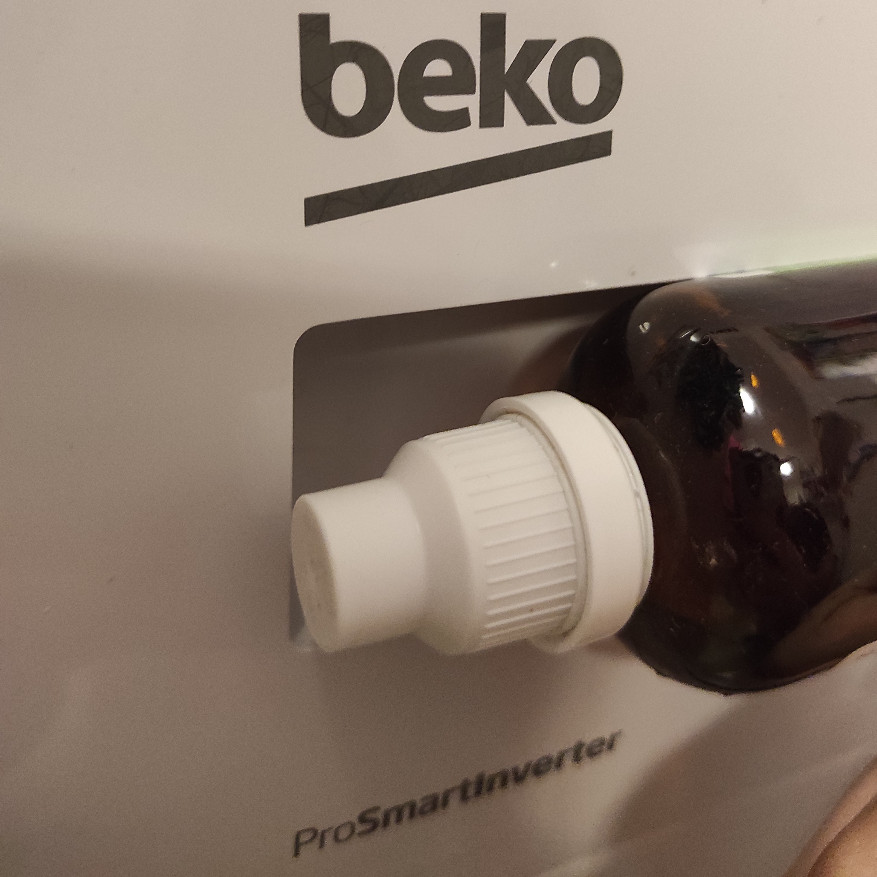Book cover showing a CRT monitor behind barbed wire. I found this book while following a citation trail for my MSc. Published before the 21st Century (fuck, I'm old) it's a run-down of this new-fangled thing called Information Warfare. It covers electronic attacks, espionage, computer security and m...
Week 09, 2022
Heh, “nobody does this any more” is far fetched but yes, basically this.
Hat tip Jan Boddeze
ProSmartInverter
Today I got called out on the internet for wearing a mask because I go as Beko _Pharm_ 😷.
I laughed hard, shared this insight with my peer group and watched their amused responses trickle in. Now that I’m found out I can probably tell you all.
Here writes the Big “beko” Pharm (or the B.B.P. – someone add me to Wikipedia already!). And what my Murican friends probably don’t know: “beko” is not only a [legit] name with all sorts of fun meanings (according to the interwebz) but also the brand of an electronics company mostly known for their washing machines. Imagine how happy I was about that when I found out!
Anyway, @RobinSohn@chaos.social seized the opportunity and created a highly professional new profile picture for me – generously released as CC-0 – a photo featuring a washing machine and an ampulla typically used for medicine.
And I love every bit of it – especially the “ProSmartInverter” 🧠
So there you have it. Buy masks and washing machines. For every sale on one of those items I get 0 dot 00 and zero 💵
Make me rich! 🤑
Random trivia: I added the “Pharm” to not be mistaken with e.g. said electronics company – how the hell was I supposed to know that a pandemic would be next on the agenda???
With #Zabbix 6.0 one of our web checks started failing with `regexp_exec() failed with error -8` when looking for a required string. This basically means “maximum recursion exceeded” (so something went into a loop). Turns out the site in question had a duplicated `</head>` tag which makes the HTML invalid.
So apparently something changed with the RegEx check and valid HTML is now required as well 🧐
Primary Buffer Panel March Update

The last update has been a while. I focused my attention to the MFDs (Multi-function display). This part didn’t get much attention yet and I was caught between the difficult choice to learn yet another fancy framework, like Raylib, that would do OpenGL ES 2.0 without X11 on the Raspberry – or just throw the might of my CoffeeLake at it and go with ReactJS since most of the data was already available via NodeRED anyway. Also… ARWES is just so cool 🤩
I went with ReactJS and ARWES again, simply because I have some experience in this by know thanks to my Streaming Overlay I wrote with it. Hobbling it up to NodeRED was just a matter of installing SocketIO to transport the messages. It’s all a very hacky mess but it gets the job done.
While seeking through the available data I noticed that I don’t get velocity values from Elite. That’s not so important in space but _kinda_ interesting for me in planetary flight to satisfy the flight sim gamer in me as well. I noticed tho that I do get timestamped latitude, longitude and altitude values so shouldn’t it be possible to “simply” calculate this, right? Right?
This was when I dived into the rabbit hole of calculating velocity and heading on planetary objects using a spherical coordinate system and while I didn’t nail it exactly how Elite does it the result is close enough. The game provides the required data to go crazy here – most important the radius of the current object. In _theory_ I could start writing some primitive AFS (Auto Flight System) routines now, which I’m totally going to explore at some point in the future just because 🤓

After spending way too much time with this and the Pythagorean theorem (Yes mum, a game made me do maths. MATHS! 🤯) I settled with some calculations and data for my current ship to the right and targeted ship data on the left. This is sort of tricky because many game events update different parts of the data so timestamps have to be kept in mind and a game specific parsing strategy is required. See the last part of the demonstration video to get an idea how this looks.

Another point to tick off my list was getting the head tracking to work in Elite (again). Now this is very Linux PC specific so you may tune out on this paragraph. On Linux PC I’d usually compile Opentrack with the Wine Glue, patch in my appdata dir for Proton and hope that it’s still ABI compliant to Just work™. Alas recent Proton is sandboxed within pressure vessel and the usual approach of memory mapping is simply no longer working, if I got the gist of this right.
So my _current_ strategy is to download and drop the Windows build of Opentrack into the game folder and chain-load the EXE with the game where the Opentrack EXE would listen on UDP while my native Opentrack BIN would send via UDP. A task not made easy with Proton but it is possible. The following snippet may give you some pointers:
#!/bin/bash
export STEAM_COMPAT_DATA_PATH=/games/steam/steamapps/compatdata/359320
export STEAM_COMPAT_CLIENT_INSTALL_PATH="$HOME/.steam/steam"
python3 /games/steam/steamapps/common/Proton\ -\ Experimental/proton run opentrack.exeWhy running Opentrack twice? The native build performs a lot better with my webcam and every frame really count here. Reading data via UDP is not much of a burden for Proton. This also saves me the trouble of fiddling with Wine Glue, a painful compile process nobody should endure involving installation of many many additional 32bit libraries. Hilarious but it works.




